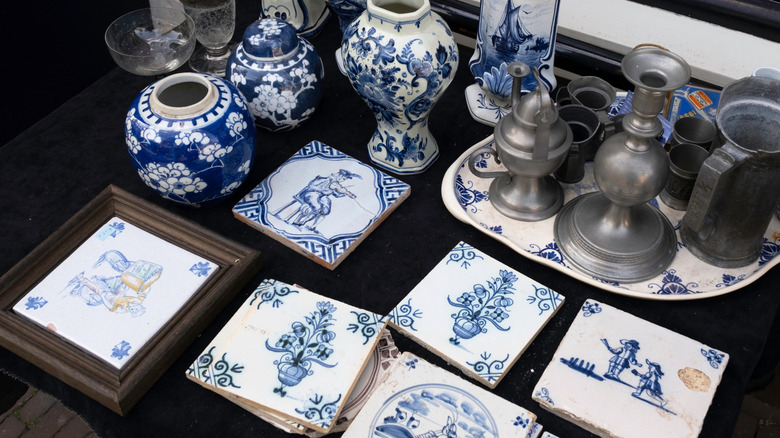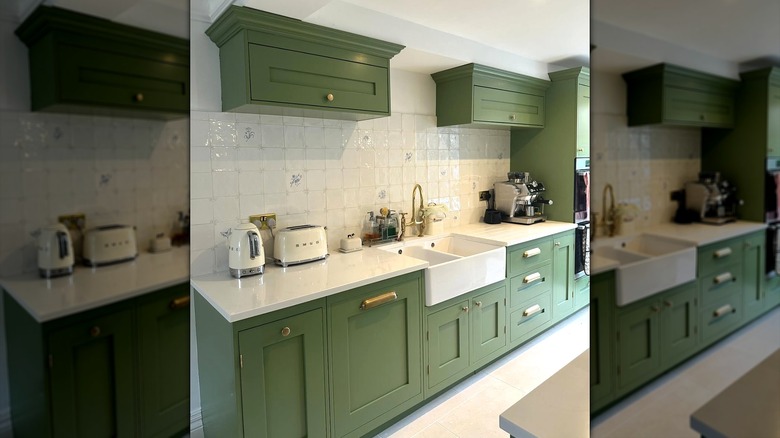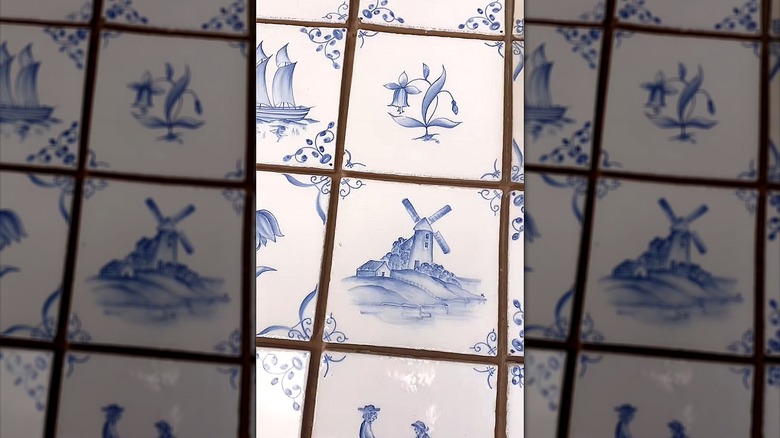The Clever Way Modern Homes Are Using Delft Tile
In a bid to fight the standardization of homes brought on by global retailers, homeowners and designers alike are constantly seeking ways to add character and individuality to interior décor. Bringing a touch of the past into increasingly clean-lined homes is particularly effective at increasing charm, warmth, and interest. That's why delft tiles are the once-outdated tile trend that is making a comeback. Hand-painted and customizable, this singular tile tradition is no longer reserved for rustic style homes, having carved its own special place within modern design, too. The key to integrating delf titles in contemporary homes is to do it creatively and selectively, reserving them for statement design features that can break up the minimalist aesthetic with a speck of sophistication and distinctiveness. And adding them to fireplaces, shower walls, and backsplashes are some of the clever ways modern homes are using delft tile.
When you're decorating with delft tiles, you're decorating with history. Delftware dates back to the 17th century and the southern Dutch town of Delft. Inspired by the exquisiteness of Chinese porcelain, the city became a hub for ceramic production, specializing in motifs from the everyday lives of Dutch people. Scenes of farming, Christianity, children's activities, and the country's fauna and flora (with an emphasis on its signature flower, the tulip, of course), adorned not just tiles, but vases, plates, and other earthenware. Since they were painted by local artisans instead of professional artists, these vignettes weren't perfect, but that only added to their unique personality.
Add a touch of whimsy to modern design with delft tiles
For a simple, modern twist on delft tiles, opt for minimal designs or corner motifs, or use them sparingly, interspersing them with plain white tiles. Applying delft tiles in conventional tile wall favorites like kitchen backsplashes, bathrooms, and fireplace mantels will bring texture and dynamism to the streamlined modern aesthetic without too much disruption. If you're looking to cause more of an impression, however, dial it up just a tad by cladding a distinctive, but simple structure in delft tiles. It's a brilliant way to make the perfect DIY coffee table or to spruce up a lackluster kitchen island, for example.
Still, don't be afraid to experiment. Modern, forward-looking design is all about finding creative ways to use tile in unexpected places in your home. The durability and versatility of this material makes it a limitless playground for experimentation and self-expression. And few tile types embody this freedom like delft tiles. Although they were traditionally designed to depict ordinary life, they have always incorporated all kinds of tongue-in-cheek or fantastical sketches. So, the best way to modernize these fascinating pieces of ceramic history is to embrace their clever and inventive nature. Think beyond the typical tile applications in kitchen backsplashes and bathrooms and bring delft tiles into the bedroom as a stylish headboard, into an open floor plan as a clever way to separate different areas, or to surprising hotspots like door frames, interior archways, and ceilings. You can also go beyond the idyllic white and blue decorations and try out the wide range of colors and original, witty designs offered by modern delft tiles manufacturers.
Mistakes that could ruin your delft tile moment
You might get away with wonky solid color subway tiles, but, for better or for worse, decorative delft tiles, with their hand painted charm, are bound to attract attention. Make sure that their application, wherever it's done, is flawless. Before anything else, consider the overall décor of the room where you're thinking of introducing these lovely pieces. As excited as you may be about hopping on this trend, you should always think in the long term by seeking a timeless balance between hip and sophisticated. Don't overwhelm your space with delft tiles or you might grow tired of them before you've even begun to enjoy them. Be selective and placate their zany drawings and stark blue and white contrast with softer solid colors, warm materials, and minimalist design throughout. These tiles will become a focal point, so decorate the rest of your space accordingly.
However, as restrained as you want to be, if you're doing any kind of tile wall, avoid cutting it off at an awkward point. Whether it's a backsplash, a shower wall, a headboard or another accent, plan its placement and limits around the existing furniture and give it a natural conclusion, even if that means taking it all the way up the wall. When it comes to planning, tile size and the resulting number of grout lines are just as important. Delft tiles are typically small 5-inch squares, so multiple grout lines are inevitable. To ensure a seamless appearance, find a grout color that matches the shade of the tiles, keeping in mind they'll very rarely be a pure white.


